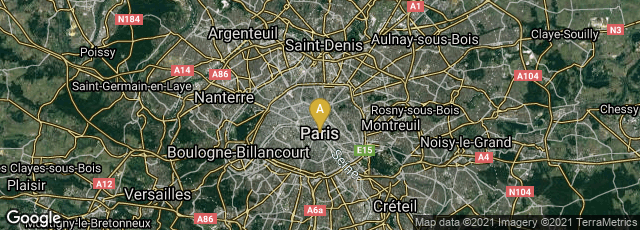In 1856 Parisian publisher
Henri Léon Curmer, in collaboration with the chromolithographer
Joseph Lemercier and printer
Jules Claye, issued a spectacular chromolithographed edition of
Thomas à Kempis's L'Imitation de Jésus-Christ. As Michael Twyman wrote in his
A History of Chromolithography (2013) p. 158, this work "took chromolithography into new territory." It also involved a nearly unprecedented amount of labor in production of both the huge number of lithographic stones, and the enormous number of impressions (averaging perhaps 10-12 impressions for each of the 400 pages) each requiring very precise registration. Twyman provided an unusually detailed commentary on the production of this book, which I quote in full:
"Curmer's l
'imitation de Jésus-Christ (1855-57) has long been recognized as a landmark French book, and its 400 pages of border decorations continue to delight the eye through the variety of their design and their vivid use of colour. In his introductory text Curmer explained his sources and outlined his production methods. A team of artists under his personal direction made drawings from original manuscripts in several libraries (what is now the Bibliothèque nationale, the libraries of the Arsenal and Sainte-Geneviève, as well as other libraries in France and overseas.). The text of the book, taken from a variety of religious sources and translated by Michel de Marillac, runs through most of the book within its border designs, each of the four texts being preceded by a full-page illustration. Essentially, the book is a compendium some of the finest manuscript border designs, mainly from the Middle Ages, but with Renaissance and Islamic examples too. Curmer tells us that he put emphasis on accuracy of transcription, though he admits that his artists were allowed to alter the size of the originals - and presumably their proportions too on occasions - to fit the publication's quarto format. He touches on the book's production and mentions that the modern-face type used for the text was transferred to stone from impressions taken on 'papier de Chine'. Furthermore, he spared researchers the tedious task of assessing the scale of the exercise by stating that the number of workings for each border ranged from three to fourteen, and that this involved the use of more than 900 stones. In fact, very few pages of the book were printed in three colours, or anything like that number: the vast majority appear to have been printed in around ten. the designs were put on stone using a combination of ink and crayon work and the printing was done on thin, calendered card.
"Curmer chose the border designs for the book with the idea of providing a feast for the eyes. Generally, facing pages match one one another in some respect, and it seems that Curmer organized their sequence to provide maximum variety from spread to spread as there is a happy justapostion of delicate designs on a white ground with other more robust ones, the colours of which glow on the page. Gold, dusted onto an ink or varnish, is found on most pages, and produced in a similar manner using powered pigment. Curmer rightly saw his publication as a major and glorious personal achievement, though those who bought the book were told nothing about the scores of artists and pressmen who must have been engaged in its production. Even the Lemercier establishment, which was responsibile for the book's outstanding chromolithography, was not acknowledged in the publisher's introduction; in the statement of printing it was given equal prominence with Claye, the printer of the book's fairly routine letterpress pages."
Supplementing the chromolithographed book, in 1858 Curmer published a separate
Appendice a L'Imitation de Jésus-Christ. This work, extensively illustrated in black & white, provided elaborate scholarly background for Kempis's text, a bibliography of Kempis's work, and the sources of all the chromolithographed images.
My copy of Curmer's edition is in a spectacular "medieval revivalesque" binding, with elaborate endpapers, gauffered edges, and elaborate metalwork.
